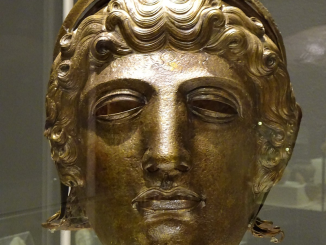
In the heart of Rome stands the Pantheon, a monument that encapsulates the grandeur of ancient Rome and its unparalleled architectural advancements. At nearly 1900 years old, the Pantheon is renowned for housing the world’s largest unreinforced concrete dome, a feat that has puzzled and fascinated architects and historians alike for centuries. This blog post delves into the marvel that is the Pantheon, guiding you through its history, architectural brilliance, and the significance of its dome. Accompanied by images that capture its enduring beauty, we also explore recent ancient discoveries that offer new insights into this iconic structure.
Architectural Marvel of Ancient Rome
The Pantheon, originally built as a temple to all the gods of ancient Rome, has stood the test of time, surviving nearly intact through the ages. Its construction is a testament to the ingenuity of Roman engineers, who, without the modern technology available today, created a structure that continues to awe and inspire. The most striking feature of the Pantheon is undoubtedly its massive dome, spanning 43.3 meters (142 ft) in diameter and holding the title of the largest unreinforced concrete dome in the world. The images of this architectural wonder, both from the outside and the inside, showcase the elegance and boldness of Roman design.

The Enigma of the Dome
The dome of the Pantheon is not just an architectural achievement; it is an enigma that has led to numerous studies and theories regarding its construction and stability. The concrete used in the dome is lighter at the top, incorporating materials such as pumice, which decreases its weight without compromising strength. The oculus at the dome’s apex, a circular opening to the sky, not only reduces the structure’s weight but also creates a unique interplay of light within the interior. Viewing images of the Pantheon’s dome, especially the oculus, one can appreciate the complexity and beauty of this ancient masterpiece.

A Journey Through Time
Walking into the Pantheon is like stepping back in time. The building’s vast circular room, covered by the majestic dome, has inspired architects and artists for centuries. The Pantheon’s design, with its harmonious proportions and the grand portico that greets visitors, reflects the architectural ideals of ancient Rome. Through images, we can admire the Pantheon’s Corinthian columns, the detailed carvings, and the rich history that permeates its walls, offering a glimpse into the past where emperors and commoners alike stood in awe of this architectural marvel.

Legacy and Influence
The Pantheon’s influence extends far beyond its physical presence. It has inspired countless buildings throughout history, including modern structures that seek to emulate its perfect proportions and domed design. Its legacy is a reminder of the timeless beauty and innovation of Roman architecture, demonstrating that the principles of design and construction from centuries ago can still resonate in the contemporary world. Images of the Pantheon, juxtaposed with those it has inspired, highlight the enduring influence of this ancient structure on global architecture.

Unveiling the Past: Ancient Discoveries
Recent archaeological investigations around the Pantheon have unearthed findings that provide new insights into its history and the civilization that built it. These discoveries, including artifacts and remnants of earlier structures, shed light on the Pantheon’s role in ancient Roman society and its evolution over the centuries. Such findings not only deepen our understanding of this iconic monument but also connect us more profoundly to the people who constructed and frequented it nearly two millennia ago. Through images of these ancient discoveries, we are reminded of the continuous quest for knowledge and the layers of history that lie beneath our feet.
In conclusion, the Pantheon is not merely an ancient building; it is a bridge to the past, a symbol of architectural ingenuity, and a source of inspiration for future generations. Through the images shared and the stories told, we invite you to appreciate the Pantheon’s beauty, ponder its mysteries, and celebrate the ancient discoveries that keep its history alive. As we explore this architectural gem, we are reminded of the enduring legacy of Roman engineering and the timeless allure of the Pantheon.



